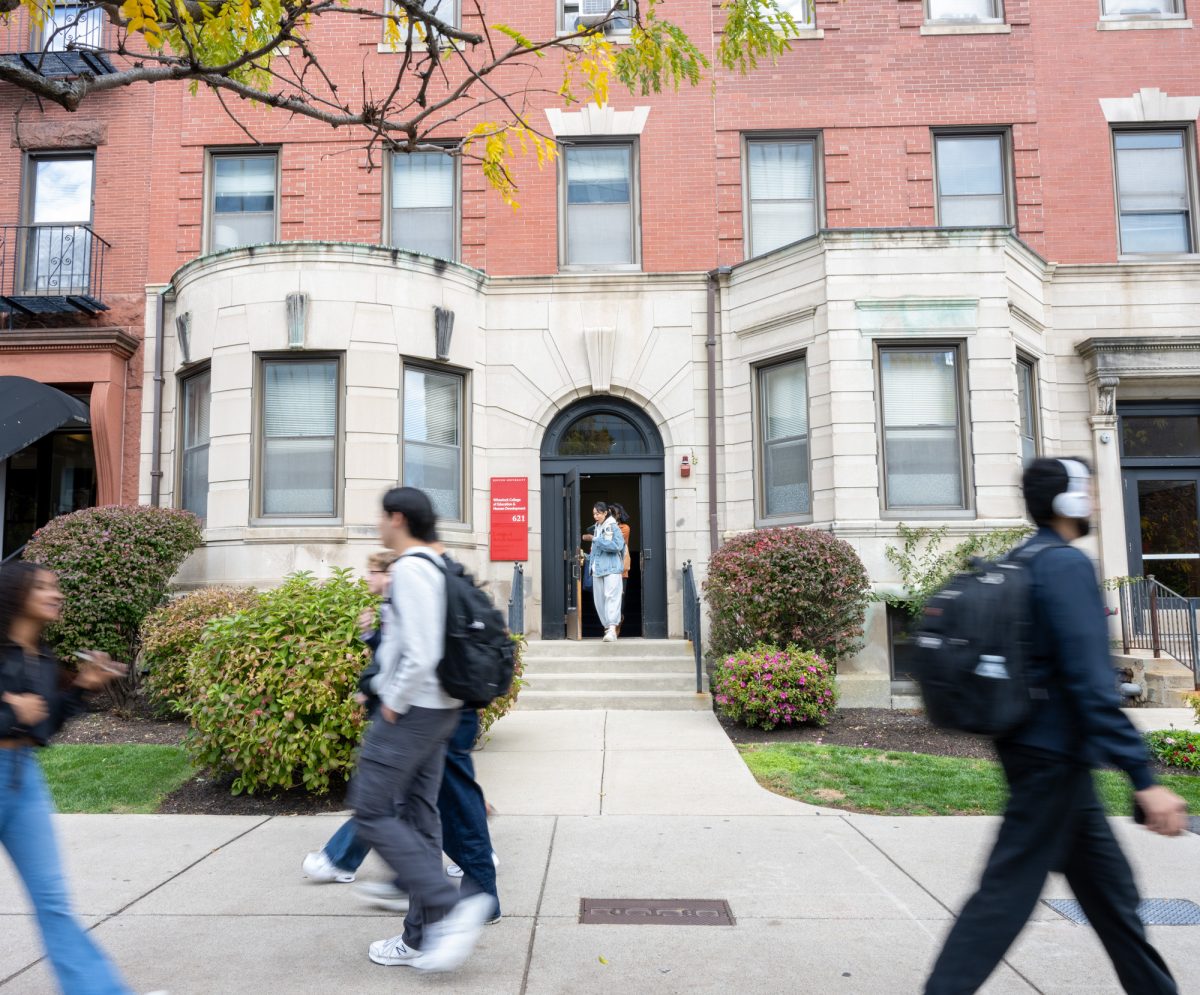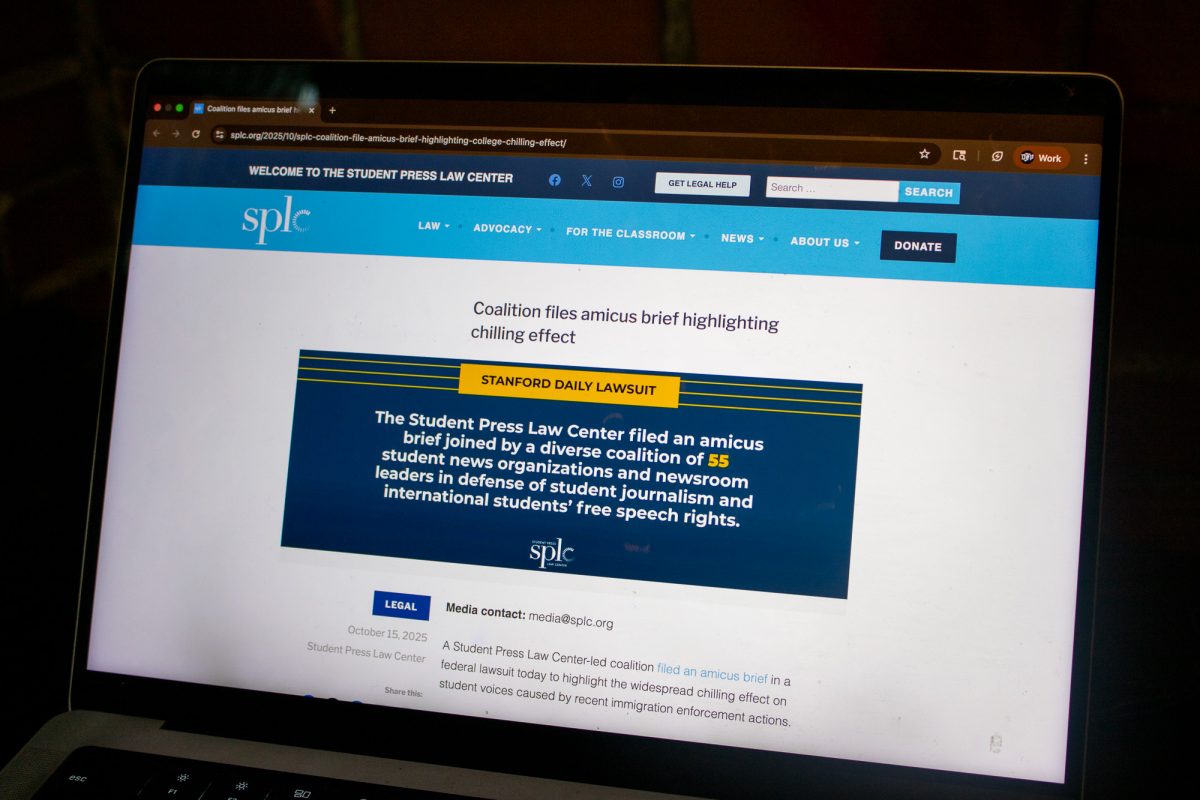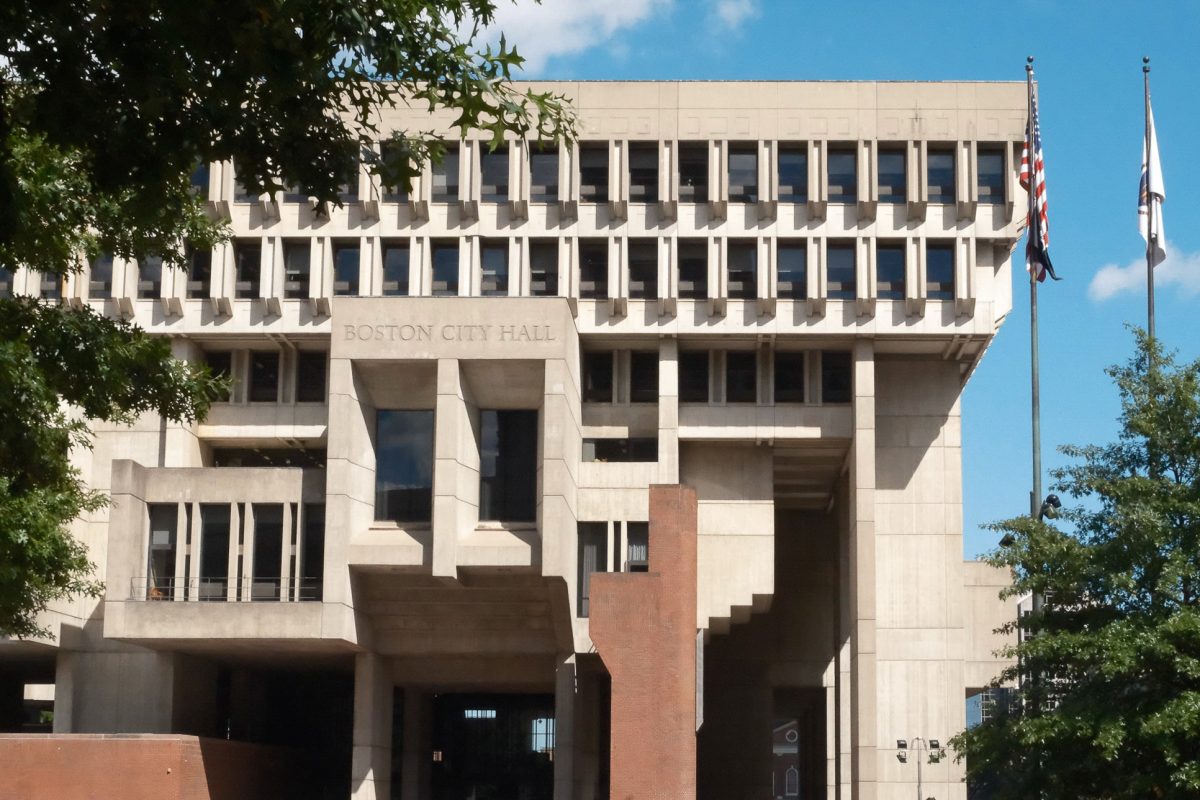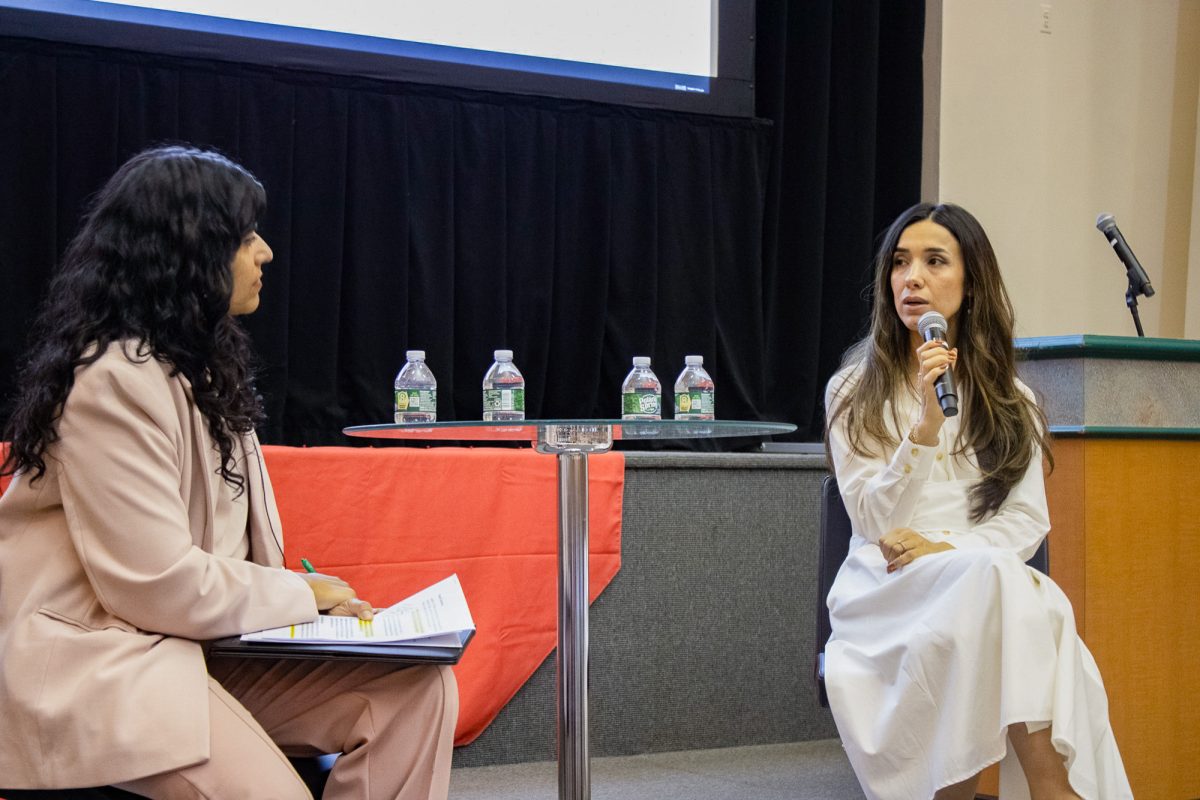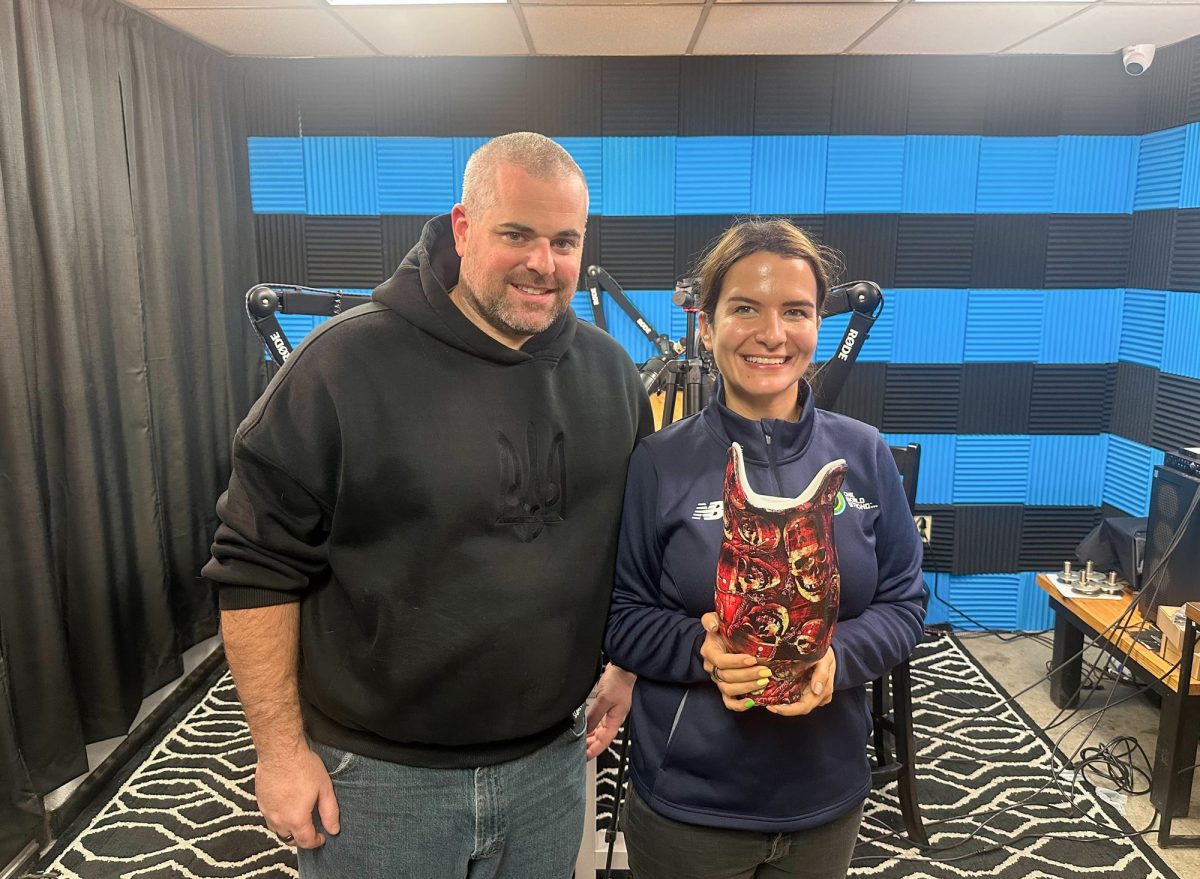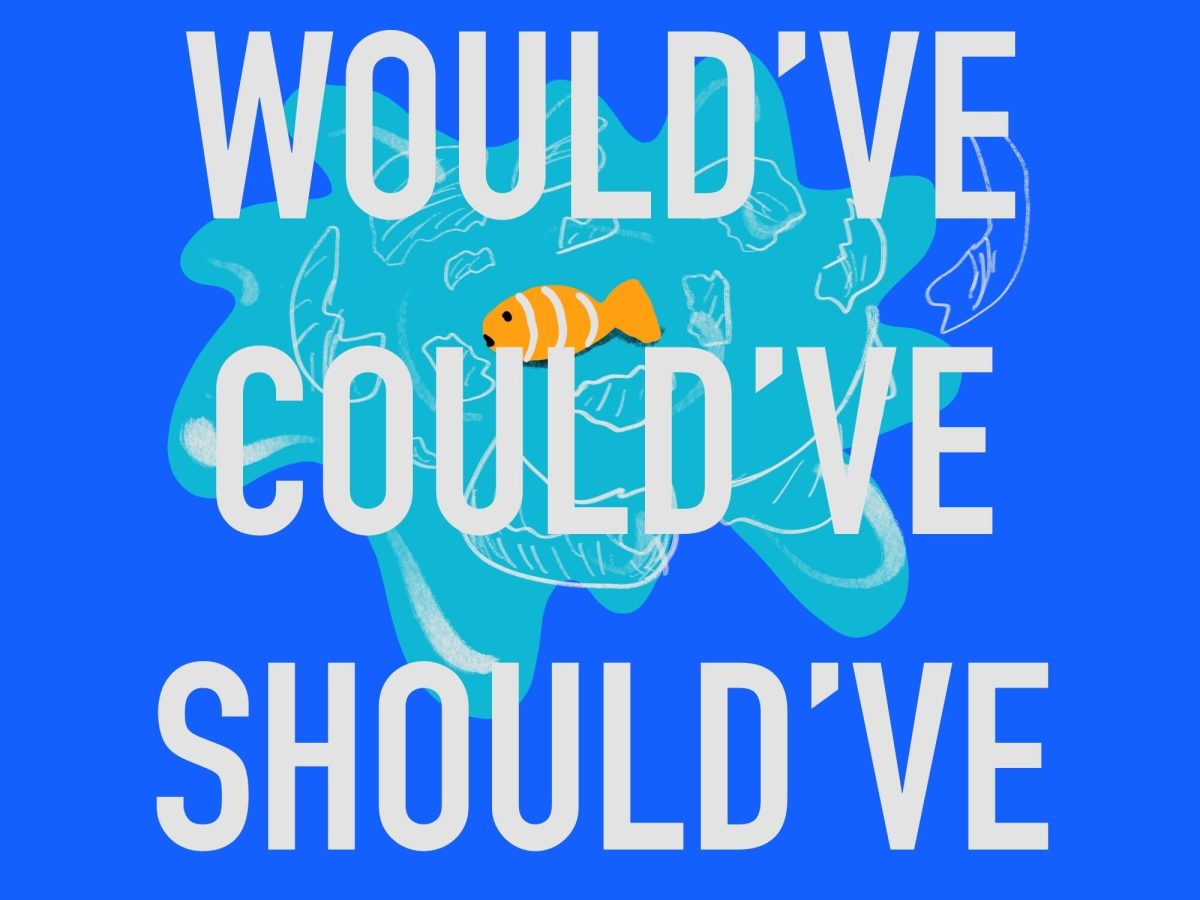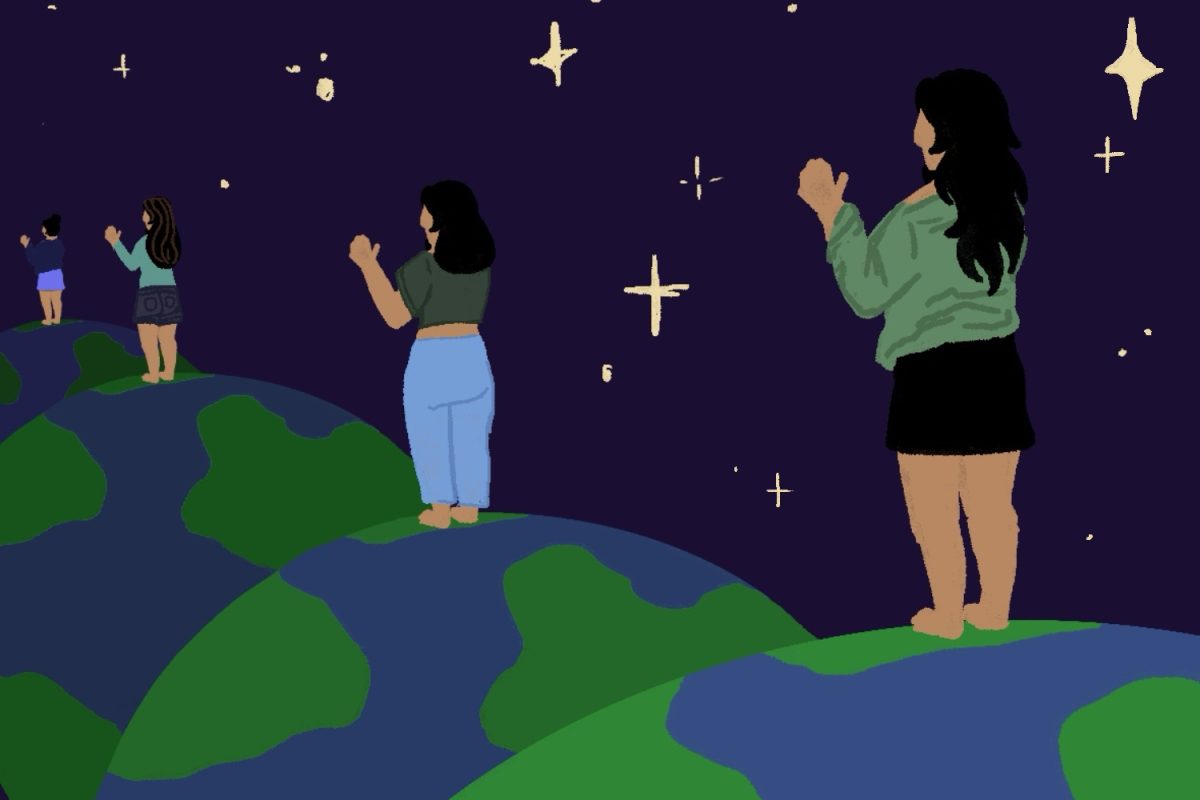Students learned from Boston University professors about what they can do to reverse damage caused by nitrogen pollution, overfishing and global warming on Earth Day Thursday.
About 50 students and faculty members attended “Footprints in the Sea: Detecting Human Impacts on Marine Ecosystems,” to hear a panel of professors discuss the impact humanity has on the ocean and how students can help.
“The world’s oceans impact the well-being of every human being on the planet,” said John Finnerty, an associate professor of biology and the director of the BU Marine Program. “But because of our limited perspective, we often don’t appreciate it or even realize how much we depend on it.”
The lecture also helped promote the new Marine Program at BU. The program, created in 2008, is an interdisciplinary major that gives marine science majors the opportunity to learn how to sail the seas, dive, explore marine environments, do original research and get their findings published, according to its website.
Robinson Fulweiler, an assistant professor of earth sciences and the assistant director at BUMP, spoke about the causes and results of an increase in nitrogen levels on Earth.
Biomass and fossil fuels and nitrogen fertilizer increase nitrogen levels astronomically, he said.
“Human sources have almost doubled the amount of nitrogen in the atmosphere in the last 200 years,” he said. “Yet 48 percent of the Earth’s population is alive today because of this increase in nitrogen fertilizer.”
Fulweiler explained the link between nitrogen in ocean-dwelling phytoplankton and excess algae production. When massive populations of algae die, many marine animals are at risk as well because the decomposition of so many algae removes oxygen from the water, creating anoxic dead zones, he said.
Another panelist, biology professor Leslie Kaufman, said overfishing and global warming have contributed to the large loss of coral reefs around the world.
“Coral reefs are in very serious trouble,” he said. “And the scary thing is, we have no idea what they’re supposed to look like.”
Because of the rapid change in coral reef ecosystems, marine biologists are having a difficult time diagnosing the problem and finding a way to reverse the damage, he said.
In his presentation, Kaufman showed the audience how coastal pollution, overfishing and increased water temperatures are quickly killing coral reefs across the globe.
“We have lost 20 to 40 percent of coral cover since the 1970s,” he said.
Kaufman proposed solutions like stopping overfishing and reducing carbon dioxide emissions.
Finnerty explained scientists could learn more about coral destruction if marine biology adopts some of the tools of molecular medicine.
“In the future, in order to diagnose and treat an illness, doctors may be able to take a small tissue sample from a patient and analyze what genes the patient is expressing,” he said. “We want to apply the same procedure to corals. We are attempting to use gene expression patterns to obtain a very sophisticated idea of how corals react to stressors such as high temperatures, infection or pollution at the molecular level.”
Finnerty said that if the lab experiments work as hoped, the approach could be used to diagnose wild corals that are in danger.
“One day we could use genetic engineering to save more vulnerable corals, and as a result, save species that depend on the coral,” he said.
Richard Murray, a professor of earth sciences, spoke about how scientists are researching changes in carbon dioxide concentration in the atmosphere, and its impact on the earth’s temperatures over thousand years.
One procedure, according to Murray, is for scientists to venture out into the middle of the ocean and collect deep cores of ocean-floor sediment. The sediment layers within these cores can explain ancient geological activity.
Another way scientists search for answers to climate history is by looking at ice cores collected from polar ice caps. Through these ice samples, the scientists can analyze each layer and get an idea of what the atmosphere was like during that time.
College of Arts and Sciences freshman Binland Lee said she attended the lecture in order to broaden her knowledge of marine science.
“A lot of these issues aren’t talked about day to day,” she said. “College students might not be aware of these issues because they are rarely covered in the media.”
Others, like College of Communication 2009 alumna Melanie Ensign thought the lecture sent an important message to attendees.
“I think the real message of Earth Day is to think about these issues every day,” she said. “I think these are impacts that people don’t necessarily see on a regular basis.
“Unfortunately, we won’t be able to see them until the damage is already done and it’s too late.”
“There are rapid changes occurring,” Finnerty said. “Even though it seems far away, it does impact human welfare. It’s important to ponder humanity’s effect on the sea, especially on Earth Day.”

